Out of the bushfires and into land management plans
We need a calm and rational debate over our response to climate change.
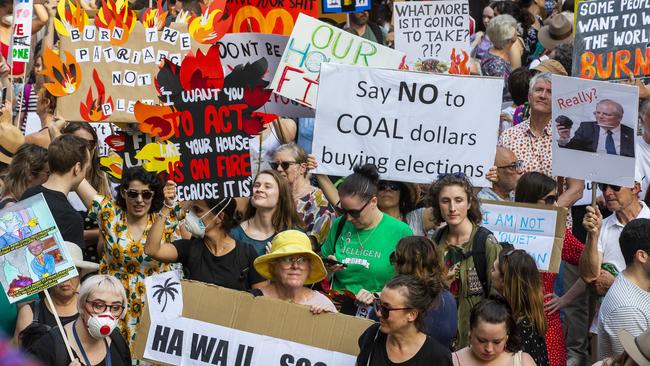
The climate change debate should be part of the discussion but is marginal compared with the central fire management issues and has been ghoulishly fanned as activists exploit real-life trauma for politics. Scott Morrison’s gravest mistake this summer might not have been his secretive overseas family getaway but his attempts to assuage Twitter, ABC and green-left-fuelled climate outrage by promising a royal commission and softening his stand on climate policy.
This has been a terrible season so far — 28 lives lost, and more than 2000 properties — and it is far from over, especially in the southern states which typically face their gravest threats in late January and February. No one who has experienced or understands bushfire’s wrath would ever downplay the terror and loss that has unfolded — because we know this horror all too well.

Large elements of the media/political class are pretending this is new, but mainstream Australians are unlikely to be fooled. They saw even worse than this 11 years ago in Victoria when 173 people were killed; 37 years ago in South Australia and Victoria when 75 people died; 53 years ago when 62 died in Tasmania; back in 1939 and the 1920s in Victoria; and so it goes.
Yet this year media catastrophism has been so fierce that it often has drowned out coverage of community stoicism, selfless volunteers and professional first responders. The exaggerations have travelled globally, triggering incredible generosity and concern along with unfounded fears, claims of “Australia burning” and heightened travel warnings. We need to ask why there has been so much climate-themed hysteria away from the fire zones because even if we closed every power station, scrapped every car and made Greens leader Richard Di Natale prime minister, we still would face bushfire conditions like this, and worse, in the future.
This has always been part of our landscape. In February last year, University of Melbourne senior lecturer in fire ecology and management Kevin Tolhurst emphasised this when writing about lessons a decade on from Black Saturday. “An event like Black Saturday will occur again,” he wrote. “The terrain, vegetation, climate and weather patterns in southeastern Australia ensure that.”

Anyone involved in land or fire management could have told you this. But coverage of this year’s bushfires since November has pretended they are “unprecedented”. This is reality denial and it is driven by climate politics. We need to deal maturely with the scientific assessments Tolhurst went on to mention: “Climate change will increase this risk.”
The science is clear, predicting that in the southeast of the country bad fire conditions will become more common because endemic summer heat and dryness are expected to increase, while regions such as northern NSW may have summer rains delayed more often, as they have been in this drought year. The reason these climate changes should be relatively marginal in the discussion is that they relate to making an existing catastrophic threat slightly more common.
The actions needed to combat the fire threat are precisely those that we have long known: preventing ignition, reducing fuel loads, creating fire breaks, planning safe distances between bushland and housing, making homes fire-safe, adequate firefighting co-ordination and infrastructure, and so on. We have tended to be complacent on these issues between major fire tragedies, despite recommendations from royal commissions and inquiries. Will we ever learn?
The Prime Minister’s royal commission may delay necessary practical action. Tolhurst wrote this week that 56 inquiries had been held through the years and some of the recommendations from a royal commission into the 1939 fires still had not been implemented; he argued the millions of dollars spent on inquiries might be better spent implementing national fire management policies already devised.
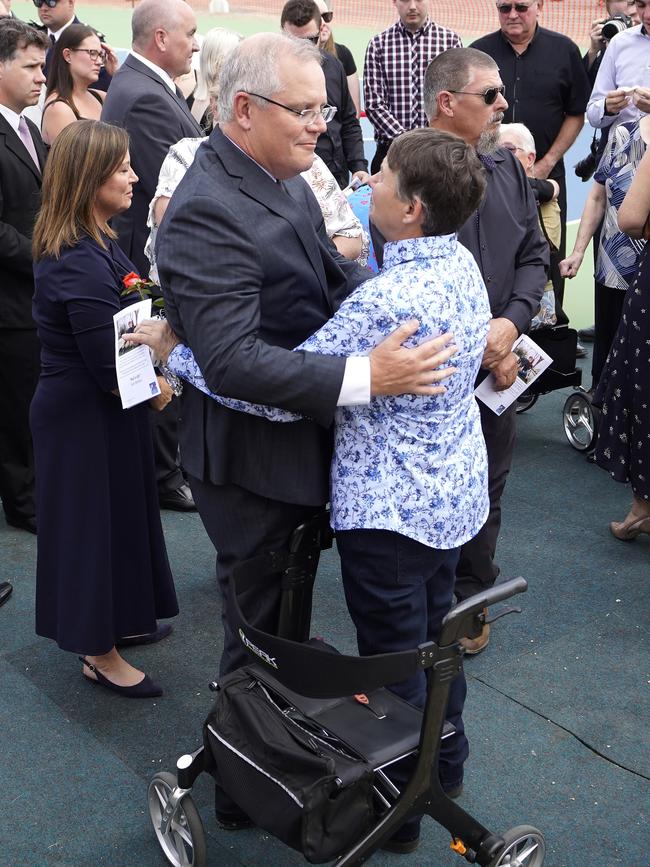
Politically, the royal commission will provide an ongoing theatre for the government’s ideological enemies, who already are urging action such as the imposition of a carbon price that would do less to combat the fire threat than your average laundry bucket.
Global carbon emissions have been increasing annually by more than Australia’s total emissions. We aren’t cooling the planet in a hurry. And we will never be immune from devastating bushfires.
Climate scientists predict the worst fire conditions — dry fuel, high temperatures and strong winds — will occur more often in the future (a 2007 study suggested a 4-25 per cent increase by this year and 15-70 per cent by 2050). When it comes to rainfall patterns, a definite factor in the early drying that has fuelled NSW fires, Andy Pitman of the ARC Centre of Excellence for Climate Extremes at the University of NSW has said there is insufficient evidence to directly link the current severe drought to climate change.
We know Australia’s weather has become hotter (although many of our hottest historical readings have been homogenised downwards) and even small increases in temperature increase flammability. A ScienceBrief assessment of research into climate change and wildfires published this month says the jury is out on Australia, noting some evidence of increasing frequency and intensity but saying a firm trend above natural variability won’t emerge until the 2040s.
None of our debate seems to bother with such nuance. A key question must be precedent. If we have faced worse fire conditions repeatedly in the past, how can we blame what we have seen this season on climate? The “unremembering” by media, politicians and activists when it comes to fire seasons that have taken more lives, destroyed more property and blackened similar vast areas is disturbing. The level of fake news that has gone largely unchallenged has been extraordinary.
Some has been driven by a journalistic cohort eager for revenge over the “climate election” — to even the score with a Prime Minister who humiliated them by winning in May. Six times as many people were killed in the February 2009 Victorian firestorm and climate change was already a dominant national issue but little blame or expectation was placed on then prime minister Kevin Rudd. Some Greens sought to blame climate change then but the controversy didn’t go very far. Rudd had yet to abandon his emissions trading scheme.
One of the more shrill voices on Twitter in the past few weeks has been Rudd’s wife, Therese Rein. She has thrown blame Morrison’s way. “Why even be in power if not to serve … to care,” she tweeted, apparently forgetting the catastrophe on her husband’s watch and his retreat on climate action.
The Greens have been off the scale with cataclysmic alarmism. This is the bonfire of their vanities. Di Natale claims Morrison is “unfit for office” and that what we are facing now is the new normal, which raises questions about what kind of normal existed in 2009, 1983, 1967 and so on.
Our PM is unfit to lead. https://t.co/6dwuzv5vwb
— Richard Di Natale (@RichardDiNatale) January 10, 2020
Labor leader Anthony Albanese was sensible and restrained for weeks but he hasn’t been able to resist the climate climb-on. He has retweeted reports that smoke will travel around the world and be blown back over Australia, and he has declared: “This is not business as usual. And failure to act doesn’t just have consequences for us; it has consequences for the entire world.” We are not even victims now but our suffering is inflicting harm on the world.
Climate alarmists have used the bushfires to amplify concerns, then convinced themselves the echo signifies a change in the zeitgeist.
Now's not the time for partisanship.
— Anthony Albanese (@AlboMP) January 17, 2020
Now's the time to make sure that bushfire-affected communities get the support they need, regardless of whose electorate they're in. pic.twitter.com/z6ED3eyRza
Still, they have declared similar shifts before and there is every likelihood the woke pundits will be wrong again, and that the media misinformation and political opportunism surrounding this year’s bushfires will fail to move a reliably wise mainstream.
The journalists, activists and commentators who are fanning the climate flames most earnestly are the same people who claimed the Coalition could not win the election, partly because of climate issues. There is much about their bushfire response that reeks of the “resistance” movement in the US and the “remoaners” in Britain.
They are democracy deniers who refuse to accept the verdict of voters in the “climate election” and shamelessly use another of Australia’s all-too-regular bushfire tragedies to push their ideological aims. It is ugly.
But they underestimate the public when they argue, with straight faces, that the fires would not have been so bad if the carbon tax had been left in place. Former climate commissioner Tim Flannery contributed to this myth-making in a CNN interview (he was wrongly tagged as a climate scientist). “I can’t tell you how it feels to me to wake up every morning smelling the smoke of my country burning for month after month,” he said, “and knowing we could have done something about it had we started 10, 15 years ago.”
Even shutting down the Australian economy 15 years ago could not have had any impact on global climate trends or these bushfires; Chief Scientist Alan Finkel admitted in June 2017 that reducing global emissions by our share would do “virtually nothing” to the climate, and we know any cuts made a decade or more ago would have been more than made up for by huge increases from China, India and elsewhere. But this is the new level of debate.
Actress and activist Magda Szubanski used the hashtag “Australia is Burning” to tweet that the fires will “define us as a nation” and that they are “OUR Gallipoli”. Greens senator Sarah Hanson-Young seemed to think pretending we’d never seen fires like this before wasn’t spin enough. She told Sky News the fires were “incredibly unprecedented”.
Prime Minister’s interview on @abcnews this morning was full of excuses.
— Sarah Hanson-Young💚 (@sarahinthesen8) January 12, 2020
Blaming everyone and everything else and refuses to take any responsibility.
He ignored warnings from fire chiefs, buried advice about the risks, pissed off on holidays and now wants a pat on the back.
Climate scientist and activist Joelle Gergis (who claimed incorrectly last year that southern Queensland rainforests had never burned before) tackled the proposition that these fires were not unprecedented in a piece for The Conversation co-authored with the Australian National University’s Geoff Cary. The article argues several factors make these fires different: the geographic spread, absence of El Nino, and how they were preceded by the hottest and driest conditions in history.
These are all important matters of context but they don’t avoid the cold hard fact that we have seen more severe fire conditions and worse fires in the past. Even the dramatic smoke hazes, as I reported last year, have struck Sydney at least as long ago as the 1930s. My questions to the NSW Rural Fire Service about precedents have yet to be answered.
The media/political environment has become so febrile that any attempt to provide factual analysis immediately draws erroneous slurs of “climate denial” and even calls for voices to be silenced. It is a worrying way to approach what is supposed to be the most crucial debate of our age.
To be fair, those resisting the climate zealots have used their own spin by putting too much emphasis on arson. Like global warming, arson needs to be part of the debate but, for the same reasons, it is a more marginal issue because just as we will always face catastrophic fire conditions, we will also have ignition through accidents, deliberate acts or lightning. What matters is how we prepare our landscapes and properties to resist and survive inevitable blazes in the worst conditions. Pretending we can eliminate arson is as fanciful as pretending Australia’s climate policies can somehow render benign our deadly bushfire seasons.
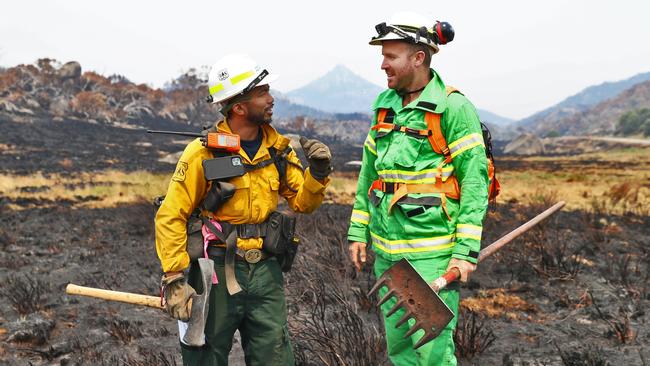
A missing element in the debate is personal responsibility. We have seen many homes burned to the ground because they have been surrounded by bush or built on wooded ridgetops.
No one wants to point the finger of blame at people who have lost everything but, as well as stronger planning controls, there must be better public education about the need to clear large areas around homes, perhaps adding protections such as window shutters and sprinklers to make them defendable.
I’ve heard directly from volunteer firefighters about the frustration of putting their lives on the line trying to protect properties that cannot be defended.
Perhaps the most galling aspect of the bushfire climate posturing has been the way it infers easy solutions; the hint we can switch to renewable energy and never face a bushfire catastrophe again. But the silver lining of the alarmism is that it may trigger more effort on planning, design, clearing and hazard reduction to make country towns, urban fringes and rural houses safe.
The media often exaggerates disaster stories and claims episodes as firsts — it is in its nature — but the addition of climate evangelism has increased this tendency.
Any young journalists willing to inject context and facts into their coverage not only take the edge off the accepted narrative but risk a cold shoulder from their innately progressive colleagues.
Not only does it suit the agenda of climate activists to claim this disaster is unprecedented, it also creates a convenient foil for state governments and fire authorities who otherwise would have to admit failings in their own land management, planning and preparedness given warnings after previous bushfire tragedies.

Perhaps the crucial factor in the staggeringly frenzied response to these fires is the advent of social media. These were our first digital media bushfire disasters and while Australians yet again showed courage, stoicism and generosity in their droves, they often were drowned out by the shrill hectoring, emotionalism and partisanship of Twitter flowing through into the mainstream media.
In this environment it is difficult for important historical, scientific and policy facts to get an airing — especially given the federal government is keen to trumpet its climate credentials and resist the onslaught while avoiding any sense it is playing down what is a deadly, serious and tragic situation.
After making the mistake of not being upfront about an overseas holiday last month, Morrison has overreacted to the pile-on against him. Apart from the royal commission, he has added bushfire prevention and management to the ever-growing list of federal government responsibilities. Can state governments not be responsible for anything on their own any longer?
The outstanding question remains. It is not about climate change or arson. It is about whether we will ever learn to take the fire threat seriously enough to prepare for it properly — to look at green bush around us and wonder how dangerous it will be when it dries out and a strong northerly blows in.
Chris Kenny has studied fire management and worked as a firespotter and firefighter during the 1983 Ash Wednesday bushfires.



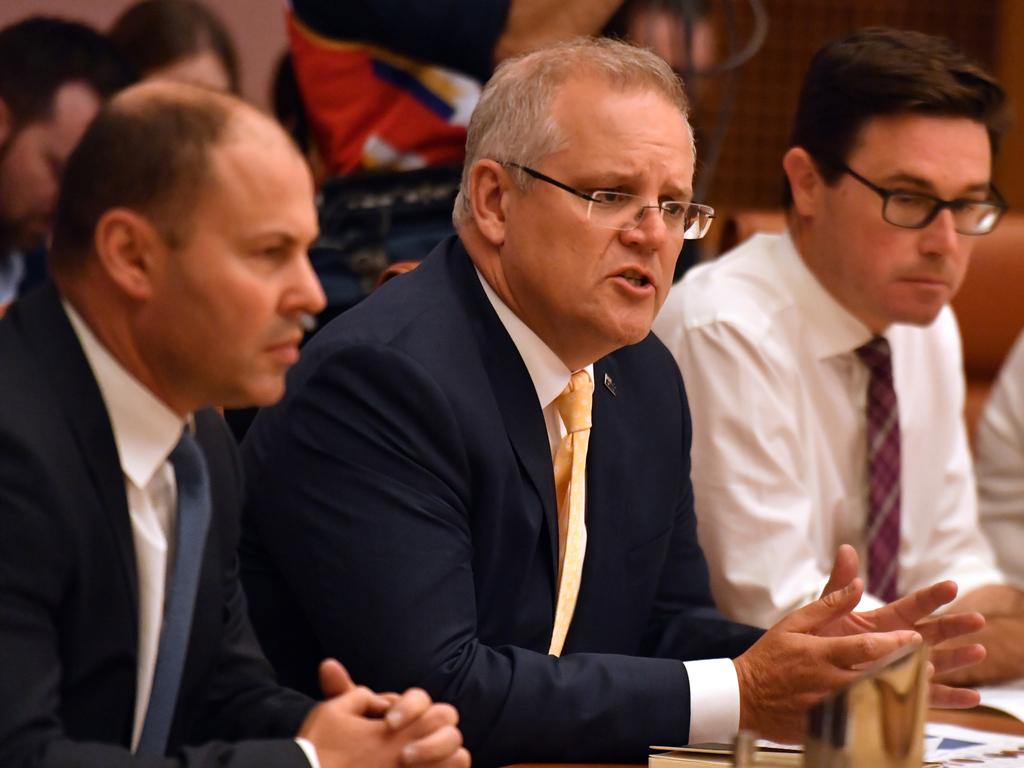
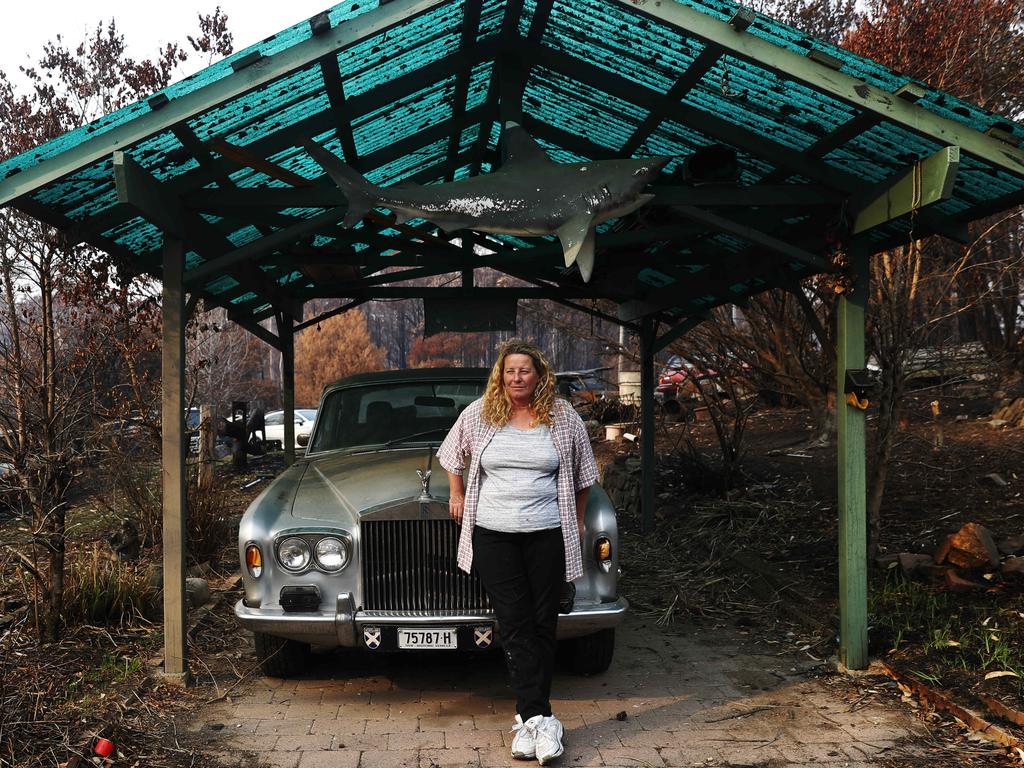



If you could miraculously prevent any changes to the Australian climate, reverting to and locking in pre-industrial era weather patterns of the 19th century, we still would face fire threats as bad as we have just seen, and worse. That is the science-based reality that demonstrates the absurdity and ideological opportunism behind the climate hysteria that has dominated media coverage of our tragic bushfire season.